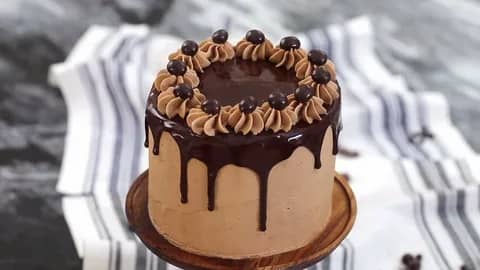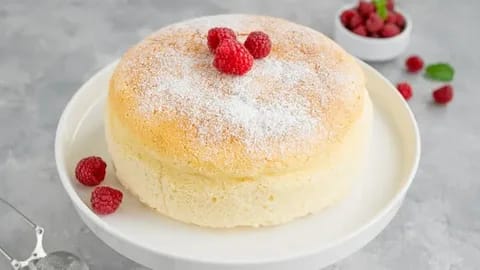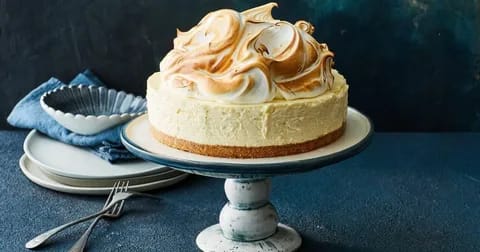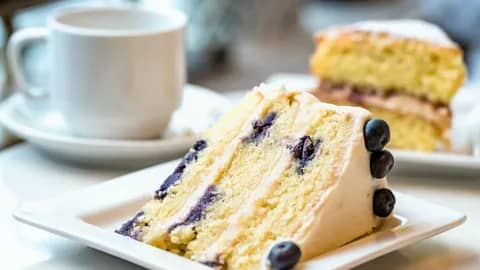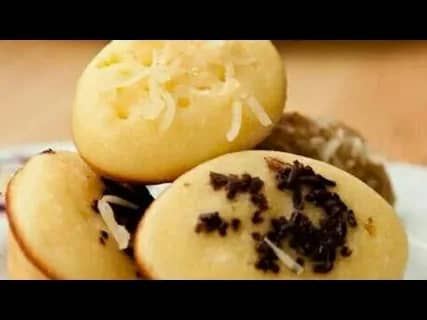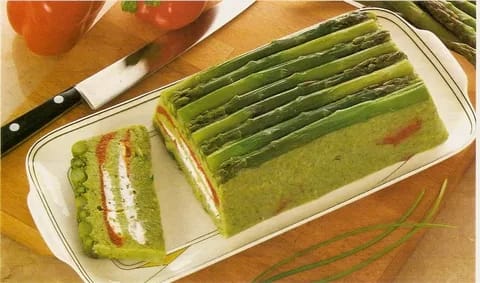
How to Make Asparagus Cake
- Asparagus cake recipe
- How to make asparagus cake
- Asparagus dessert cake
- Savory asparagus cake
- Vegetable cake recipe
- Healthy asparagus cake
- Asparagus cake frosting
- Sweet and savory cake
- Baking with asparagus
- Asparagus in dessert
- Unique cake recipes
- Easy cake recipes with vegetables
- Cream cheese frosting for cake
- Asparagus baking ideas
- Vegetable-based cake
- How to bake with asparagus
- Best asparagus cake recipe
- Easy recipe for asparagus cake with cream cheese frosting
- How to incorporate vegetables into desserts
- Delicious savory asparagus cake recipe for parties
- Healthy dessert ideas with asparagus
- Asparagus cake with lemon and cream cheese frosting
- Step-by-step guide to making asparagus cake from scratch
- How to bake an asparagus cake with a unique twist
Asparagus is one of those vegetables that usually shows up on your plate as a side dish or part of a fancy salad, right? You’d never expect it to be the star ingredient in a cake. But guess what? It can be! Asparagus cake is one of those quirky recipes that might raise a few eyebrows, but when you taste it, you’ll wonder why no one thought of it sooner. It’s sweet, savory, and just the right amount of surprise. So, let’s get started with this delightful recipe.
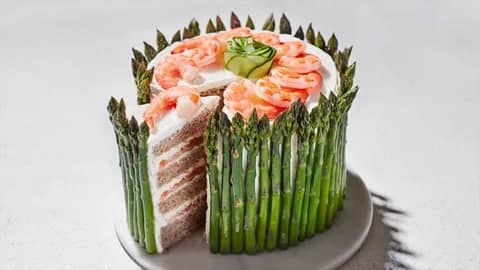
What Exactly is Asparagus Cake?
Before you turn up your nose or decide to scroll away, hear me out. Asparagus cake is a soft, fluffy, and moist cake made with—you guessed it—fresh asparagus. It’s usually paired with a touch of sweetness and a hint of savory flavor, making it a perfect treat for brunch, afternoon tea, or even as a conversation starter at dinner parties.
So why asparagus, you ask? Well, why not? It’s packed with nutrients, it adds a subtle earthy flavor, and it brings a pop of color to your cake. Plus, it’s a great way to sneak in some veggies into your desserts without anyone being the wiser. Trust me, your guests will be amazed when you tell them the secret ingredient.
Ingredients for Asparagus Cake
Before you get to the fun part (baking, of course), you’ll need to gather a few things from the kitchen. Here’s a basic list of ingredients to make this cake:
For the Cake:
- 1 ½ cups of fresh asparagus, chopped into small pieces (about 1-inch long)
- 1 cup of all-purpose flour (you can substitute with whole wheat flour for a healthier option)
- 1 cup of sugar (you could use honey or maple syrup for a different flavor profile)
- ½ cup of unsalted butter (melted)
- 3 large eggs
- 1 teaspoon of vanilla extract
- ½ teaspoon of baking powder
- ¼ teaspoon of baking soda
- Pinch of salt
- 1 teaspoon of lemon zest (optional but adds a zesty kick)
- ¼ teaspoon of ground cinnamon (optional but gives it a nice depth of flavor)
- ½ cup of milk (almond milk works if you prefer dairy-free)
For the Frosting:
- 1 cup of cream cheese (softened)
- 2 tablespoons of butter (softened)
- ½ cup of powdered sugar
- 1 teaspoon of vanilla extract
- 1 tablespoon of lemon juice (gives a nice tang)
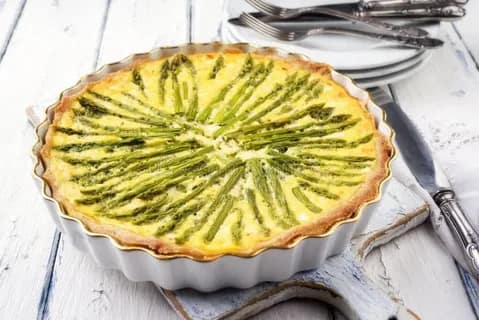
How to Make Asparagus Cake: Step by Step
Step 1: Preheat the Oven
First things first: preheat your oven to 350°F (175°C). Your cake will need some time to bake, and we don’t want it to be a cold reception when it hits the oven.
While the oven is warming up, grease and flour your cake pans or line them with parchment paper. This step is crucial if you don’t want your beautiful cake to stick to the sides like a bad breakup.
Step 2: Prepare the Asparagus
Wash the asparagus thoroughly and trim off the tough ends. Cut the asparagus into small 1-inch pieces. You don’t want big chunks in your cake, but you want enough asparagus to give the cake some character. Don’t worry, it won’t taste like you’re eating a salad—just trust the process!
Now, the trick is to blanch the asparagus to soften it up. Bring a pot of water to a boil, and once it’s boiling, drop the asparagus pieces in. Let them cook for about 2-3 minutes, then drain them and plunge them into a bowl of ice water to stop the cooking process.
Once they’re cool, use a paper towel to pat them dry. Excess moisture could ruin the texture of your cake, and we don’t want a soggy situation, do we?
Step 3: Mix the Dry Ingredients
In a large bowl, mix together flour, baking powder, baking soda, cinnamon, and salt. This is your dry mix, and it’s important to make sure the ingredients are well combined. You don’t want lumps in your cake—unless you’re going for that rustic, “I just baked this in my kitchen with my bare hands” look.
Step 4: Whisk the Wet Ingredients
In a separate bowl, whisk together your eggs, sugar, and melted butter until everything is nice and smooth. Then add the vanilla extract, lemon zest, and milk.
If you’re feeling extra fancy, you can mix it all with an electric mixer to make sure it’s airy and fluffy, but a whisk and a little elbow grease will do just fine.
Step 5: Combine Wet and Dry Ingredients
Now, slowly add the dry ingredients to the wet ingredients. Stir them together gently until everything is just combined. Be careful not to over-mix, or you’ll end up with a dense cake. The batter should be smooth, but it’s okay if a few lumps remain.
Step 6: Fold in the Asparagus
Here comes the fun part: fold in the blanched asparagus. Don’t blend it in too much—we want the asparagus to stay intact so you get little bursts of flavor in every bite. Just gently fold it into the batter with a spatula.
Step 7: Bake the Cake
Now that your cake batter is ready, pour it into the prepared pans. Use a spatula to smooth the top, and pop it into the preheated oven. Bake for about 30-35 minutes or until a toothpick inserted into the center comes out clean.
This is the moment where you start to smell something delicious wafting through your house. It’s almost like the asparagus is saying, “I told you this would be a good idea!”
Step 8: Cool the Cake
Once baked, take the cake out of the oven and let it cool in the pan for about 10 minutes. Then, turn it out onto a wire rack to cool completely. It’s important that the cake cools down before you frost it; otherwise, you’ll have a melty, gooey frosting situation on your hands.
Step 9: Make the Frosting
While your cake cools, let’s work on the frosting. In a bowl, beat together the cream cheese, butter, and powdered sugar until smooth and creamy. Add the vanilla extract and lemon juice and continue to beat until everything is well combined. If you want a fluffier frosting, beat it for a few extra minutes.
Step 10: Frost the Cake
Once the cake is completely cooled, spread a generous amount of the cream cheese frosting over the top. You can either frost the top and sides of the cake or go for a more rustic look with just a dollop in the center.
And there you have it! Your asparagus cake is ready to be devoured. Serve it to your friends and family and wait for the reactions. They’ll be shocked at how delicious this unexpected combo tastes.

Final Thoughts
So, what did we learn today? Asparagus isn’t just for fancy salads and vegetable medleys. It can be the star of a cake, too! This recipe is a fun, quirky way to use an underappreciated vegetable and make it into something truly unique. It’s the kind of cake that will get people talking—and maybe even asking for the recipe.
If you’re looking for something different to serve at your next gathering, or if you just want to impress your friends with your daring culinary skills, asparagus cake is the way to go. Plus, it’s a great way to sneak some extra veggies into your diet without anyone noticing.
Give it a try and let your taste buds be the judge. Who knows? Asparagus might just become your new favorite cake ingredient!
Bonus: Add Some Fun Twists
If you want to get adventurous, feel free to add some fun twists to the cake:
- Add nuts: Walnuts or pecans can give it a nice crunch.
- Switch up the frosting: Try a cream cheese-cinnamon frosting for a spicier kick.
- Go chocolate: A drizzle of melted dark chocolate on top can never hurt.
Now go forth, and bake yourself some asparagus cake!

